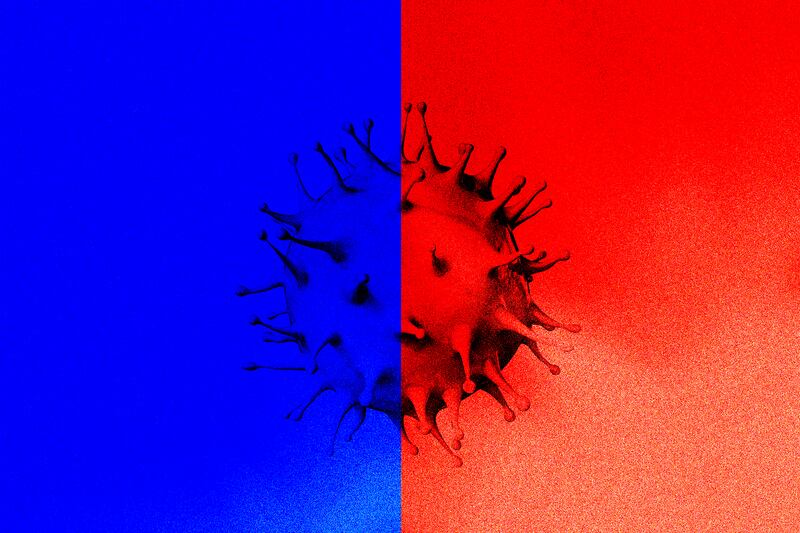COVID-19 appears to be gaining ground again in the United States and abroad, according to a variety of news reports. New York City cases have reached a “high alert” level, cases are up across the country and North Korea has ordered a lockdown after announced COVID-19 cases were detected last week in its capital city, Pyongyang.
Here’s the latest pandemic news:
North Korea updates
Experts expect the country — one of two without any vaccines — to face some major challenges in the months ahead. But even as its case counts rise, North Korean officials have reported that a million people have recovered from an outbreak it just acknowledged last week. At that time, officials ordered a lockdown to cope with the outbreak. And public health officials worldwide are skeptical.
The Associated Press reported that North Korea appeared to be dealing with its public health crisis “in isolation as global experts express deep concern about dire consequences.”
As The Washington Post puts it, “If the figures are accurate, the country appears to be experiencing the beginnings of the disaster that the rest of the world faced in early 2020: a national health crisis that will quickly overwhelm a healthcare system already under duress, with the most vulnerable people at greatest risk of death.”
Although not all experts believed it, until last week North Korea claimed not to have had a case of the novel coronavirus. It now reports an unspecified number of BA.2 omicron subvariant cases.
Harvard experts said no death rate for the subvariant has been established, but it appears similar to the initial wave of COVID-19. If that 0.5% rate proves true, as many as 125,000 people in North Korea could die, the article said.
Wednesday, Reuters reported that North Korea said more than a quarter-million more people have fever symptoms and six more had died. The government didn’t say how many people had tested positive for COVID-19, though it said 1.72 million patients had fever symptoms and by Tuesday 62 had died.
Reuters said the country has limited testing capability and has not started mass vaccinations. “In the face of an ‘explosive’ COVID-19 outbreak, North Korea has mobilized its armed forces, including 3,000 military medical staff, for a 24-hour medicine delivery system, with 500 response groups to confirm and treat infected patients,” state media have reported, according to Reuters. The article noted that South Korea has offered supplies, including vaccines, masks and test kits, as well as technical support, but said North Korea has not responded.
At least twice in the past, North Korea has turned back free shipments of vaccine from the United Nations.
North Korea has the advantage of a relatively young population, median age in the mid-30s, so it’s not likely to see as much death as countries with older populations. But since the population is unvaccinated, that amps up the risk of bad outcomes, health experts say.
During the Tuesday COVID-19 briefing. the World Health Organization’s director of health emergencies, Michael Ryan, said that unchecked transmission greatly raises the risk of new variants emerging.
North Korea’s infrastructure was already reportedly fragile before the pandemic. Food shortages, inadequate access to medical care and supplies, lack of enough clean water, malnutrition and poor sanitation are all problems that have plagued the country, according to a 2020 United Nations report. It said that North Koreans “remain caught in a protracted cycle of humanitarian need that, not withstanding tense geopolitical dynamics, necessitates prioritization and action from the global community.”
COVID cases are rising in the U.S.
Caseloads are also climbing in the U.S. and elsewhere, as are hospitalizations, with an average of 94,199 new cases a day, according to the Centers for Disease Control and Prevention COVID tracker as of Wednesday. An average of 274 people die each day in America and more than 4,000 on average are admitted to hospitals daily. The tracker said that of those age 5 and older, close to 83% have now been vaccinated.
Other COVID-19 trackers also show an alarming upward trend.
The New York Times Tracker says cases are rising fastest in Mississippi, Connecticut, Pennsylvania and Arizona. Mississippi cases are up 223%, while Utah’s cases are up 100% in the past 14 days. Among all states, only Maine shows a decrease in cases in the past 14 days; the case total there is down 5%.
By the Times’ count, new cases overall have increased 61% in the past 14 days, while hospitalizations are up 27%. New deaths, though, have dropped 7% over that time frame.
Emergency deadline passes
The New York Times reported that “On Monday, the administration quietly let pass a deadline for lifting the public health emergency, which has allowed the government to take steps like offering Americans free COVID-19 vaccines, tests and treatments; barring states from canceling people’s Medicaid coverage; and expanding access to telehealth appointments. It has also allowed hospitals to get paid more for treating Medicare patients who have COVID.”
Biden promised to alert states 60 days before lifting the emergency designation, which was slated to expire July 15. So the lack of action Monday amounts to an extension.
The White House COVID briefing is back
The COVID-19 briefing returned to the White House Wednesday after a six-week break. It was led by President Biden’s coronavirus response coordinator, Dr. Ashish K. Jha. The substantial increase in virus infections suggests that the pandemic is not over, he said.
Jha also urged Congress to provide funding for vaccines and treatments that will be needed in the fall.
“Without additional resources, we will find ourselves in a fall or winter with people getting infected and no treatments available for them because we will have run out,” he told reporters.
More free tests
The White House has opened a third round of applications for free, at-home COVID-19 tests, which can be ordered through the U.S. Postal Service. Requests your tests at covidtests.gov.


